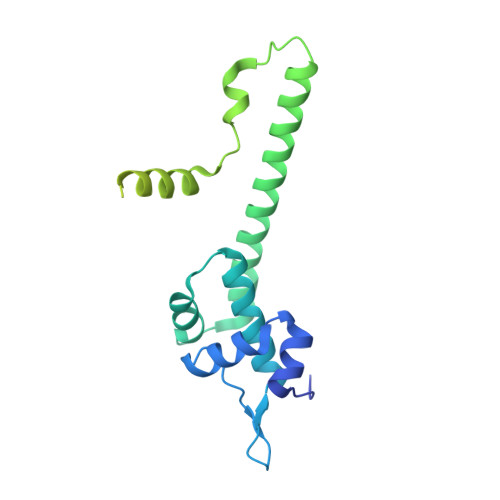Antibiotic binding releases autoinhibition of the TipA multidrug-resistance transcriptional regulator.
Jiang, X., Zhang, L., Teng, M., Li, X.(2020) J Biol Chem 295: 17865-17876
- PubMed: 33454020
- DOI: https://doi.org/10.1074/jbc.RA120.016295
- Primary Citation of Related Structures:
7CLA - PubMed Abstract:
Investigations of bacterial resistance strategies can aid in the development of new antimicrobial drugs as a countermeasure to the increasing worldwide prevalence of bacterial antibiotic resistance. One such strategy involves the TipA class of transcription factors, which constitute minimal autoregulated multidrug resistance (MDR) systems against diverse antibiotics. However, we have insufficient information regarding how antibiotic binding induces transcriptional activation to design molecules that could interfere with this process. To learn more, we determined the crystal structure of SkgA from Caulobacter crescentus as a representative TipA protein. We identified an unexpected spatial orientation and location of the antibiotic-binding TipAS effector domain in the apo state. We observed that the α6-α7 region of the TipAS domain, which is canonically responsible for forming the lid of antibiotic-binding cleft to tightly enclose the bound antibiotic, is involved in the dimeric interface and stabilized via interaction with the DNA-binding domain in the apo state. Further structural and biochemical analyses demonstrated that the unliganded TipAS domain sterically hinders promoter DNA binding but undergoes a remarkable conformational shift upon antibiotic binding to release this autoinhibition via a switch of its α6-α7 region. Hence, the promoters for MDR genes including tipA and RNA polymerases become available for transcription, enabling efficient antibiotic resistance. These insights into the molecular mechanism of activation of TipA proteins advance our understanding of TipA proteins, as well as bacterial MDR systems, and may provide important clues to block bacterial resistance.
Organizational Affiliation:
Hefei National Laboratory for Physical Sciences at Microscale, School of Life Sciences, National Synchrotron Radiation Laboratory, University of Science and Technology of China, Hefei, Anhui, China; Department of Cell Biology and Anatomy, Graduate School of Medicine, University of Tokyo, Tokyo, Japan. Electronic address: xgjiang@m.u-tokyo.ac.jp.














